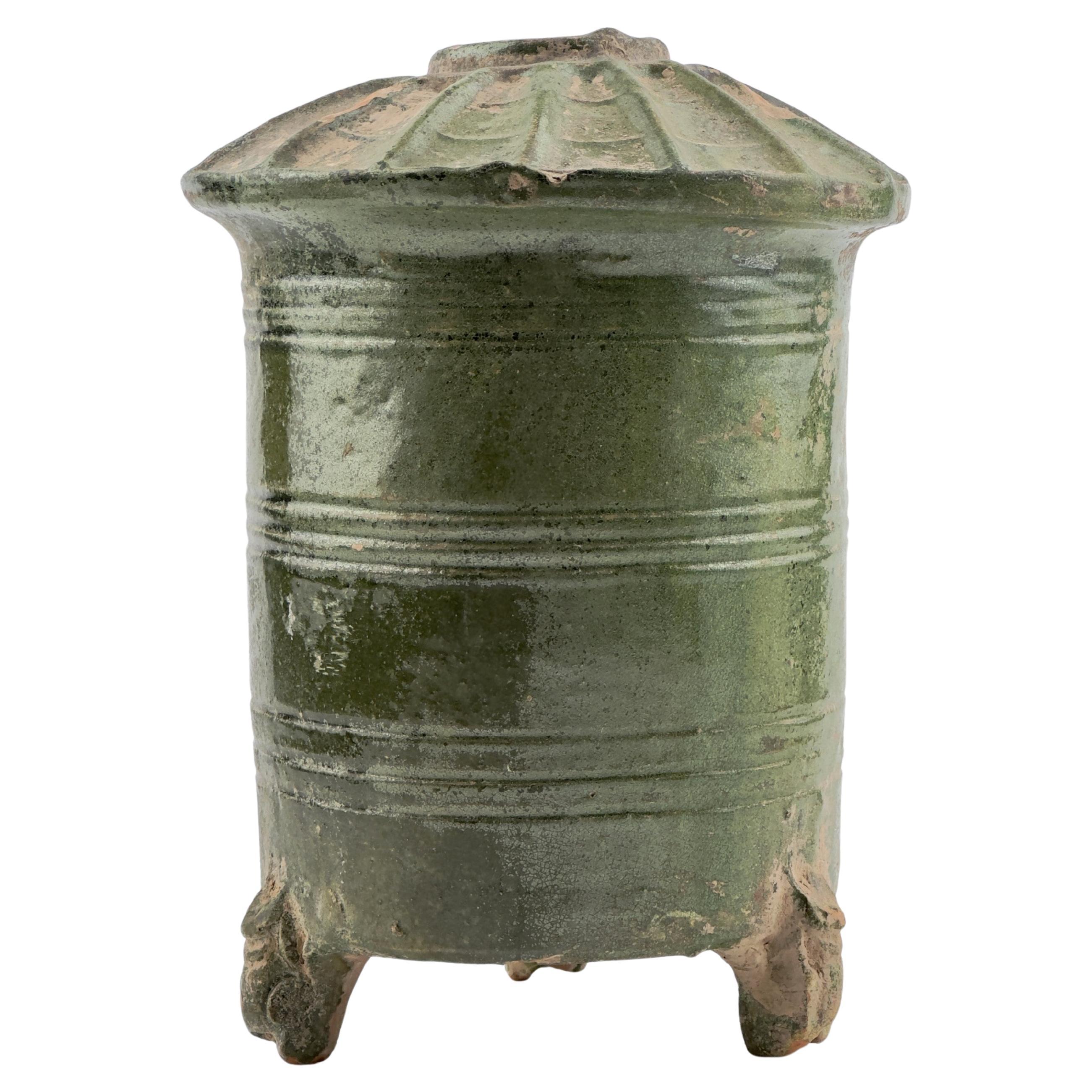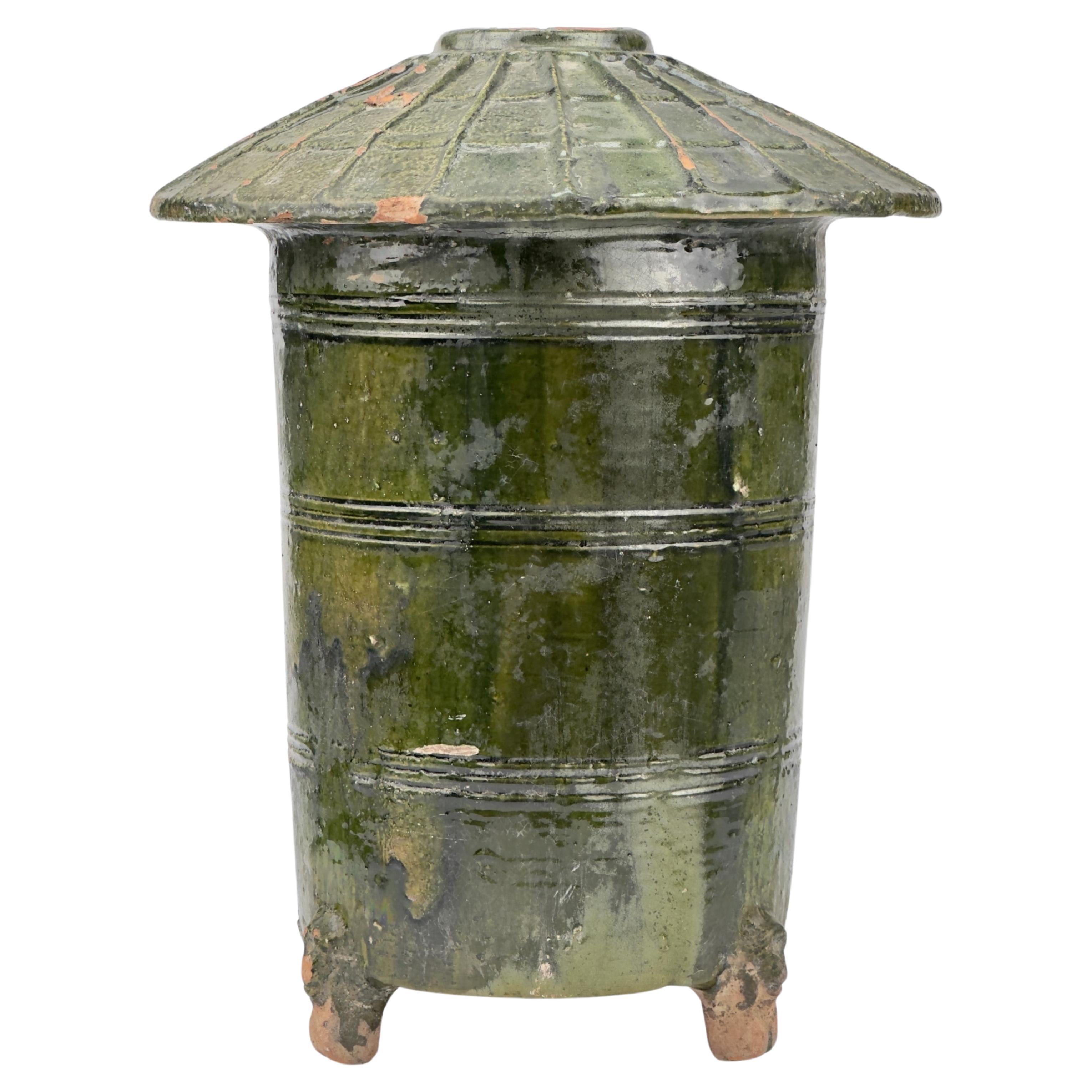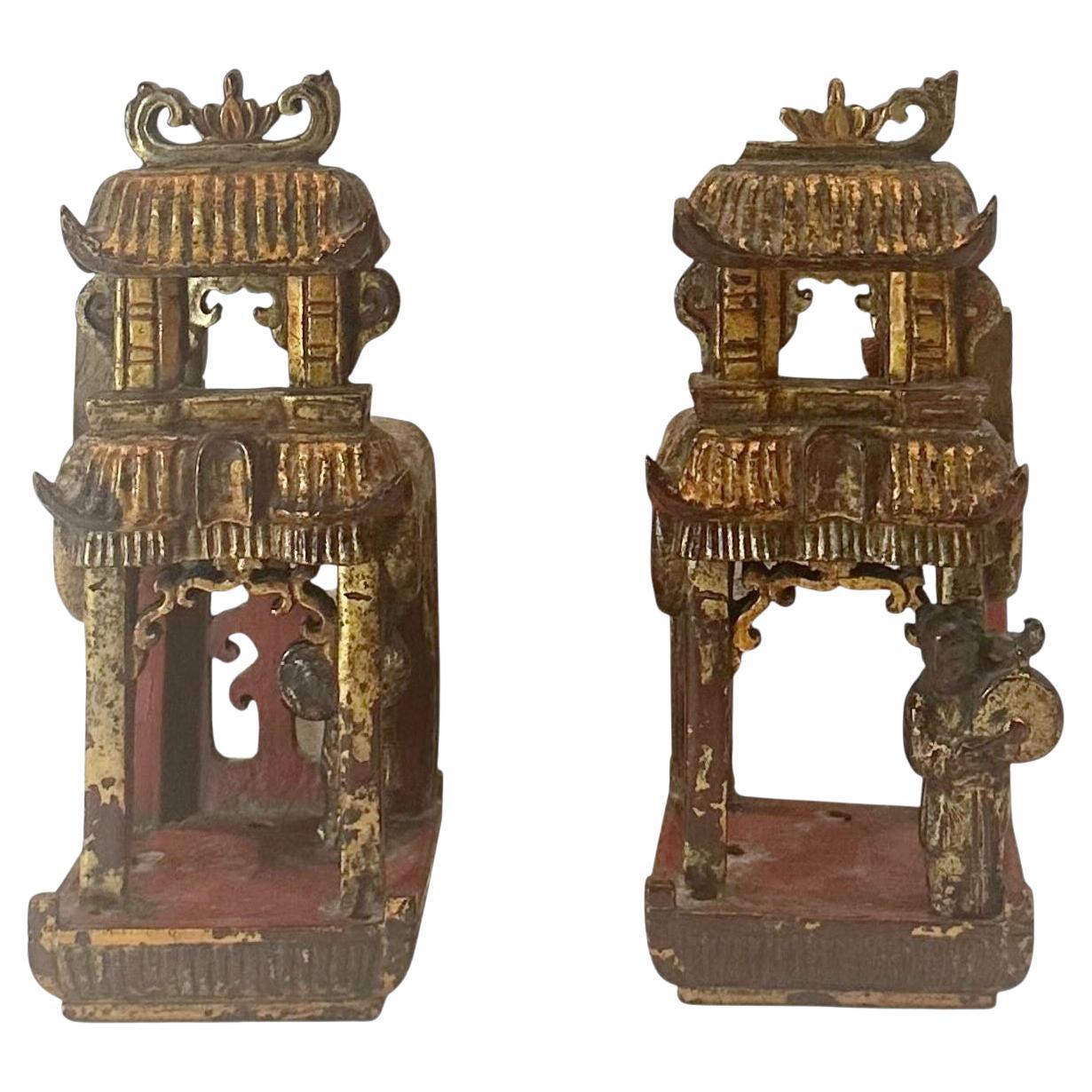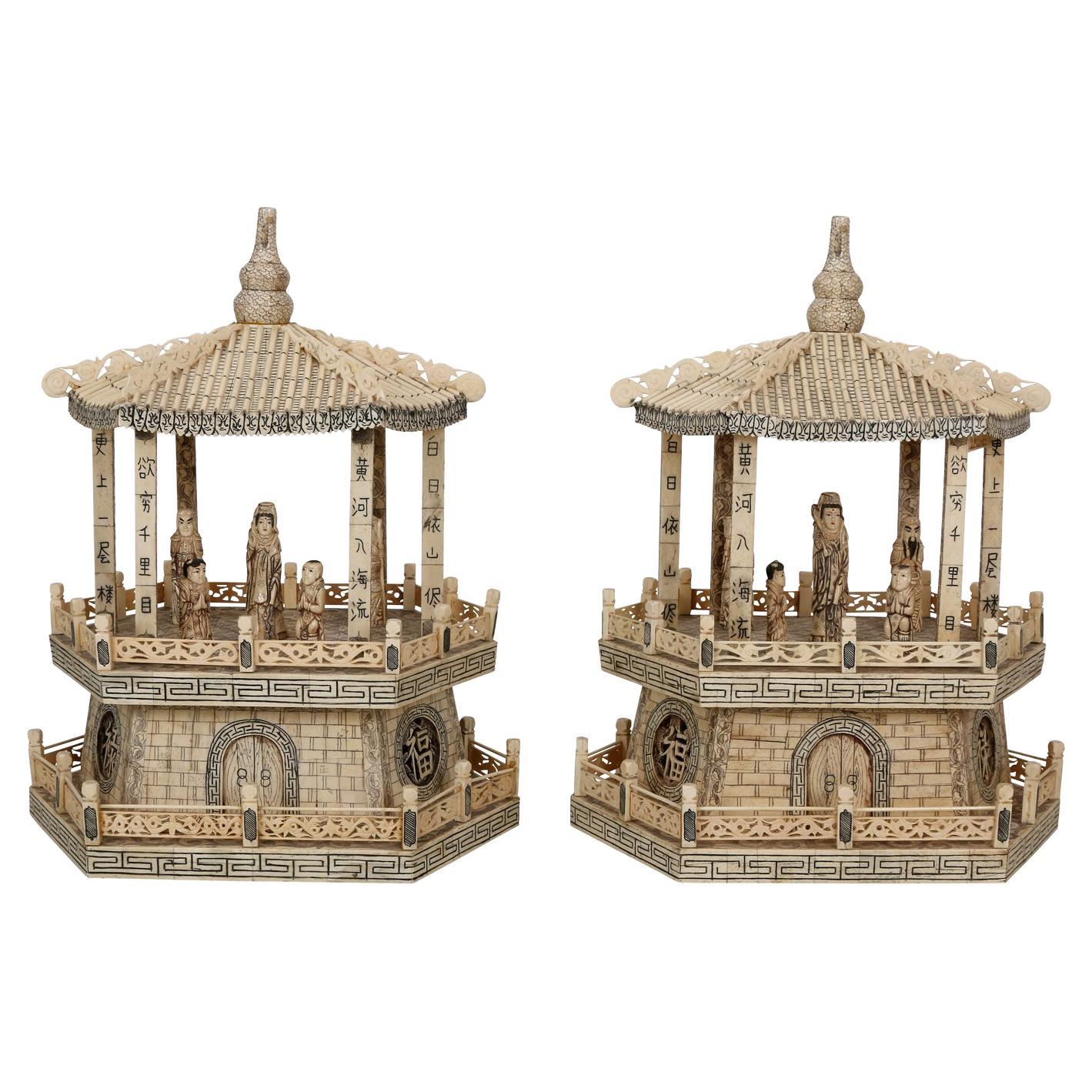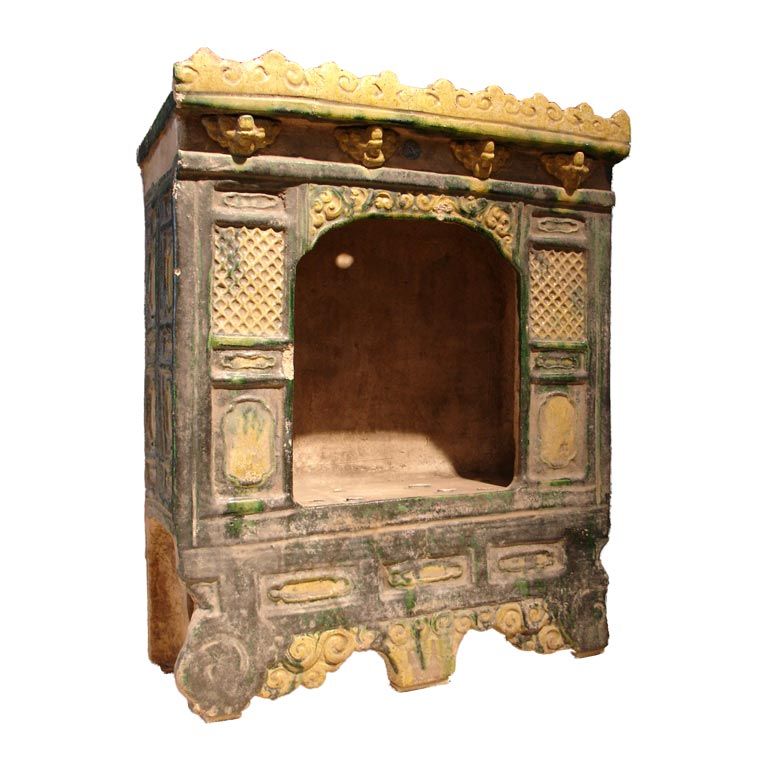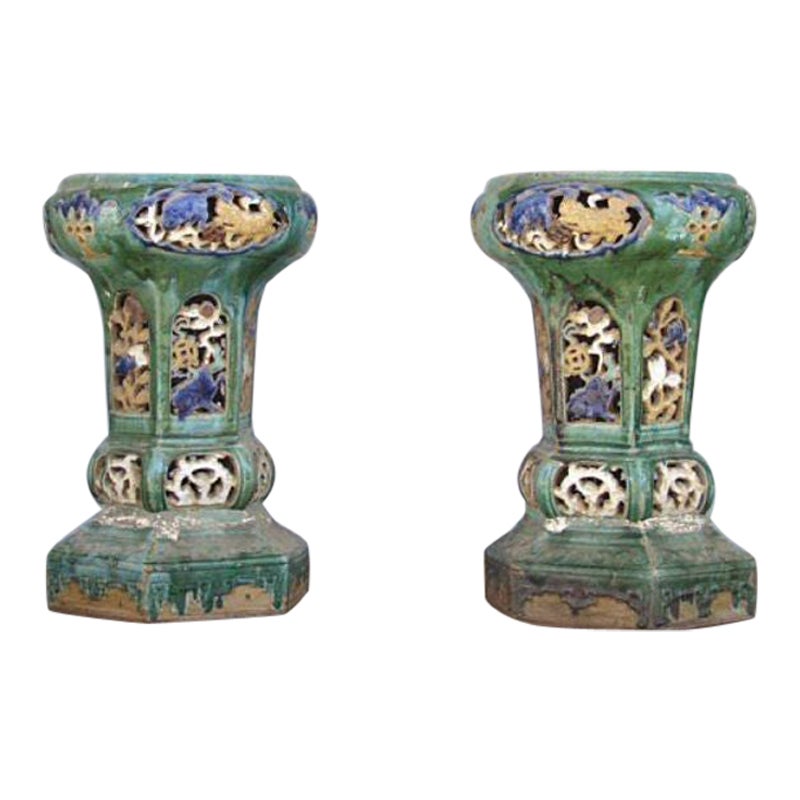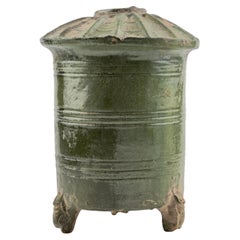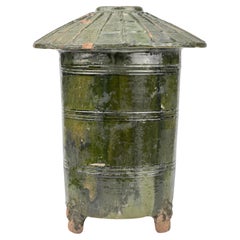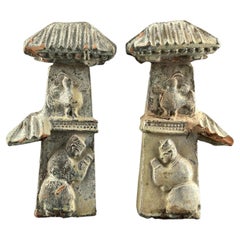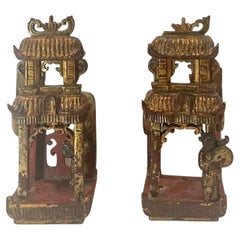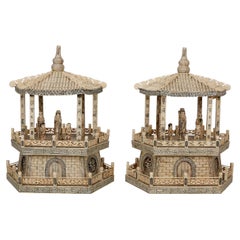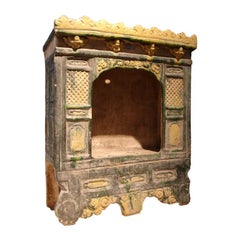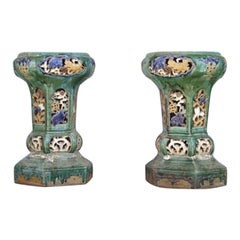Items Similar to Chinese Qingbai Small Model of a Granary Set, Song Dynasty
Want more images or videos?
Request additional images or videos from the seller
1 of 16
Chinese Qingbai Small Model of a Granary Set, Song Dynasty
$1,592per set
$1,990per set20% Off
£1,208.84per set
£1,511.05per set20% Off
€1,382.40per set
€1,728per set20% Off
CA$2,224.25per set
CA$2,780.32per set20% Off
A$2,473.86per set
A$3,092.32per set20% Off
CHF 1,291.77per set
CHF 1,614.71per set20% Off
MX$30,104.21per set
MX$37,630.26per set20% Off
NOK 16,497.89per set
NOK 20,622.36per set20% Off
SEK 15,472.11per set
SEK 19,340.14per set20% Off
DKK 10,317.40per set
DKK 12,896.75per set20% Off
Shipping
Retrieving quote...The 1stDibs Promise:
Authenticity Guarantee,
Money-Back Guarantee,
24-Hour Cancellation
About the Item
Two granary model porcelains. East Asia, This pottery representation of a granary sits on a layered base, topped with a conical lid that also acts as its roof, all finished in a greyish-blue glaze characteristic of Qingbai ware. The round structure features vertical, embossed strips intersected by a sliding door marked with horizontal lines on one side. Above, a tiled roof completes the model, topped with a central finial that doubles as the lid's handle. The interior of the lid, along with the edge and bottom of the piece, retains the unglazed finish known as biscuit.
Period : Song Dynasty(960~1279)
Type : Porcelain Model
Medium : Qingbai
Dimension : 11 cm(Height), 9cm(Lid Diameter)
Condition : Good
Provenance : Acquired in late 1990s from Hongkong
Reference :
1) Artemis Gallery - Louisville, CO, US - September 29, 2022
2) University of Oxford - Ashmolean Museum - Accession no.EA1956.3076
* Qingbai Ware
Qingbai ware, which translates to "blue-white ware," is a type of Chinese porcelain that was made at the Jingdezhen and other kilns in the porcelain-producing regions of China, primarily during the Song dynasty (960–1279) and continuing into the Yuan dynasty (1271–1368). It is known for its translucent quality and the pale blue-green glaze that characterizes most of its pieces.
The qingbai glaze was achieved using a small amount of iron in a reduction-fired atmosphere, which produced the subtle blue-green tint. The body of qingbai ware is typically made of a fine, white porcelain that is often referred to as 'artificial jade' due to its resemblance to the esteemed stone. The thinness of the body and the high firing temperatures used contributed to the translucent quality of the finished product.
Qingbai ware includes a range of items such as bowls, cups, vases, and ewers. The designs are usually simple and elegant, with an emphasis on the graceful lines and form of the objects. Decorative motifs, when present, are often incised, carved, or molded in relief and can include floral patterns, dragons, phoenixes, and other symbolic elements drawn from Chinese culture.
Over time, the technology and techniques used to produce qingbai ware evolved, leading to innovations in glaze and decoration that would influence later types of Chinese porcelain. Despite these changes, qingbai ware remains a distinguished example of the potters' art in Song and Yuan China, reflecting the refined aesthetic and cultural values of the period.
- Dimensions:Height: 4.34 in (11 cm)Diameter: 3.55 in (9 cm)
- Sold As:Set of 2
- Materials and Techniques:
- Place of Origin:
- Period:
- Date of Manufacture:960-1279
- Condition:Wear consistent with age and use. Minor fading. Crack on left porcelain lid.
- Seller Location:seoul, KR
- Reference Number:1stDibs: LU9577239175422
About the Seller
4.8
Gold Seller
Premium sellers maintaining a 4.3+ rating and 24-hour response times
Established in 1999
1stDibs seller since 2023
38 sales on 1stDibs
Typical response time: <1 hour
- ShippingRetrieving quote...Shipping from: seoul, Korea South
- Return Policy
Authenticity Guarantee
In the unlikely event there’s an issue with an item’s authenticity, contact us within 1 year for a full refund. DetailsMoney-Back Guarantee
If your item is not as described, is damaged in transit, or does not arrive, contact us within 7 days for a full refund. Details24-Hour Cancellation
You have a 24-hour grace period in which to reconsider your purchase, with no questions asked.Vetted Professional Sellers
Our world-class sellers must adhere to strict standards for service and quality, maintaining the integrity of our listings.Price-Match Guarantee
If you find that a seller listed the same item for a lower price elsewhere, we’ll match it.Trusted Global Delivery
Our best-in-class carrier network provides specialized shipping options worldwide, including custom delivery.More From This Seller
View AllFunerary Model of a Granary, Han dynasty
Located in seoul, KR
Cylindrical vessel on three animal-shaped feet (dragon or snake), wall with profile grooves, roof. pottery with green lead glaze. "Iridescence" is observed in surface.
Period : Han...
Category
Antique 15th Century and Earlier Hong Kong Han Antiquities
Materials
Pottery
$1,400 Sale Price
30% Off
Funerary Model of a Granary, Han dynasty
Located in seoul, KR
Cylindrical vessel on three animal-shaped feet (dragon or snake), wall with profile grooves, roof. Ceramic with green transparent glaze. "Iridescence" is observed in surface.
Period...
Category
Antique 15th Century and Earlier Hong Kong Han Antiquities
Materials
Stoneware
$2,242 Sale Price
25% Off
Carved Bamboo Incense Burners, Late Qing to Republic period
Located in seoul, KR
Each burner features a unique design with traditional pillar-shaped structures and intricate openwork carvings. The lids are adorned with delicate floral and nature-inspired motifs, ...
Category
Antique 19th Century East Asian Antiquities
Materials
Bamboo
$975 Sale Price
35% Off
Gate Pillar, Han Dynasty(206BC-220AD)
Located in seoul, KR
The Han Dynasty gate pillar held by the Asian Art Museum in San Francisco and this gate pillar are the only known examples of their type worldwide, highlighting its extraordinary rar...
Category
Antique 15th Century and Earlier Hong Kong Han Antiquities
Materials
Earthenware
$5,985 Sale Price / set
25% Off
Two Annamese Small Yuhuchunping, 15th century, Le Dynasty
Located in seoul, KR
These 15th-century Annamese ceramics from Le dynasty, are notable for their rarity and refined design. The Yuhuchunping vases, with their elegant pear-shaped bodies and delicate blue...
Category
Antique 15th Century and Earlier Vietnamese Ming Antiquities
Materials
Ceramic, Stoneware
$1,553 Sale Price / set
35% Off
Milling Shed pottery with Green Glaze, Eastern Han Dynasty
Located in seoul, KR
Made from the standard orange earthenware body of Han green glazed tomb models, this miniature milling station features a circular millstone and a foot...
Category
Antique 15th Century and Earlier Hong Kong Han Antiquities
Materials
Earthenware, Pottery
$3,675 Sale Price
25% Off
You May Also Like
18th Century Chinese Fragments
Located in Tampa, FL
An exceptional pair of 18th century Chinese architectural fragments, hand carved from wood and shaped in the likeness of miniature temples or pagodas. These richly detailed pieces fe...
Category
Antique 1790s Chinese Architectural Elements
Materials
Wood, Paint
$450 / set
Monumental Pair of Vintage Bone Inlayed Chinese Pagoda Temples
Located in Locust Valley, NY
A beautiful pair of monumental vintage bone inlay Chinese pagoda temples with miniature figurines. This super chic pair is a beautiful addition to any roo...
Category
Mid-20th Century Unknown Chinese Chippendale Sculptures and Carvings
Materials
Bone
Chinese Ming Dynasty Sancai Glazed Pottery Architectural Model, 16th Century
Located in Austin, TX
An unusually large Chinese Ming Dynasty glazed pottery architectural model of a shrine or cabinet, Ming Dynasty (1368 - 1644), circa 16th century, China.
The shrine model crafted o...
Category
Antique 16th Century Chinese Ming Sculptures
Materials
Pottery
Pair of 19th Century Chinese Ceramic Bolsters
Located in Marseille, FR
Pair of 19th century Chinese ceramic harnesses. Many chips (see photos). Height 55 cm for a diameter of 38 cm.
Additional information:
Material: earthenware & ceramics.
Category
Antique 19th Century Chinese Ceramics
Materials
Ceramic
$1,198 / set
Antique Ceremonial Urns, Song Dynasty, 12th-13th Century
Located in New York, NY
Two tall ceremonial urns dating from the 12th-13th century, Southern Song dynasty. Glazed terracotta. They depict 12 traditional ritual attendant...
Category
Antique 15th Century and Earlier Chinese Other Antiquities
Materials
Earthenware
Antique Chinese Granary Jar
Located in Yonkers, NY
A 17th century Antique Chinese Granary Jar hand made from terracotta with a verdigris patina. Unearth an enthralling piece of history with...
Category
Antique 17th Century Chinese Ming Ceramics
Materials
Terracotta
More Ways To Browse
Fine Art Models
Song Dynasty
Chinese Song Dynasty
Song Dynasty Furniture
Song Porcelain
Asian Tiles
Chinese Door Handles
Blue Phoenix China
Chinese Tile
Song Dynasty Vase
Thin Porcelain Chinese
Song Dynasty Porcelain
Iron Roof
Chinese Art Tiles
Chinese Dragon And Phoenix
Chinese And Porcelain And Phoenix
Chinese Porcelain Phoenix
Chinese Jade Vase
